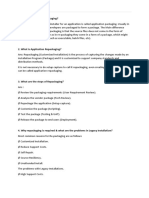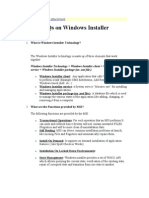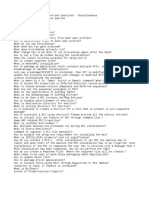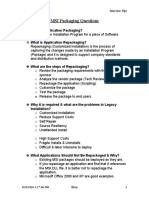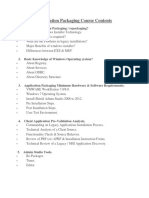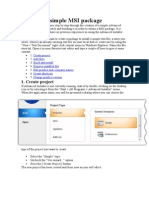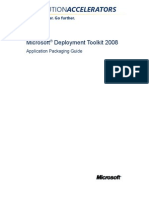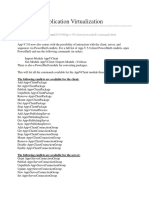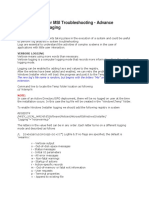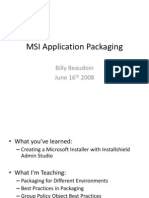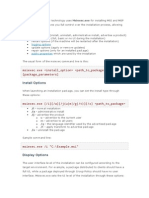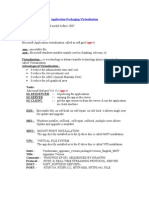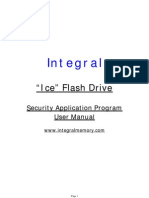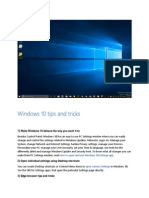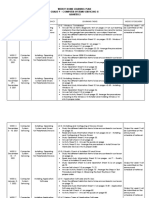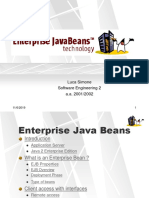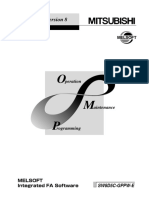100% found this document useful (1 vote)
830 views5 pagesApplication Packaging Training Course
This document provides an overview of application packaging training. It discusses:
1. Taking snapshots of a clean machine and after installing AdminStudio for packaging applications.
2. The application packaging workflow process of requirements, technical review, packaging method, testing, pilot deployment, and mass deployment.
3. The two main methods of application packaging - application repackaging for .exe files and application transforms for .msi files. It provides details on the repackaging and transform processes.
Uploaded by
Jordan BottrellCopyright
© © All Rights Reserved
We take content rights seriously. If you suspect this is your content, claim it here.
Available Formats
Download as DOCX, PDF, TXT or read online on Scribd
100% found this document useful (1 vote)
830 views5 pagesApplication Packaging Training Course
This document provides an overview of application packaging training. It discusses:
1. Taking snapshots of a clean machine and after installing AdminStudio for packaging applications.
2. The application packaging workflow process of requirements, technical review, packaging method, testing, pilot deployment, and mass deployment.
3. The two main methods of application packaging - application repackaging for .exe files and application transforms for .msi files. It provides details on the repackaging and transform processes.
Uploaded by
Jordan BottrellCopyright
© © All Rights Reserved
We take content rights seriously. If you suspect this is your content, claim it here.
Available Formats
Download as DOCX, PDF, TXT or read online on Scribd
/ 5

